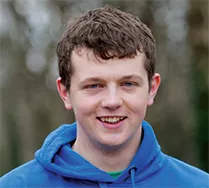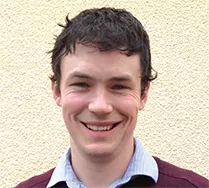Key Info
Bachelor of Education in Graphics, Engineering and Technology
Why Study Graphics, Engineering and Technology concurrent with Teacher Education at UL?
UL's School of Education is the largest post-primary teacher education provider in the state and is ranked in the top 100 universities in the world for Education programmes. University of Limerick is also ranked within the top 75 universities in Europe for excellence in teaching and learning.
This degree with specialism in the teaching of Metalwork and Technology, is designed to produce graduates with technological and engineering skills to satisfy the needs of the Irish second level school system in relation to teaching Metalwork, Technical Graphics and Technology at Junior Cycle, and the subjects Technology, Engineering and Design & Communication Graphics at Leaving Certificate.
- The School of Education at UL is one of the largest suppliers of teachers in Ireland - the reputation of our graduates and their tradition of success are well established in schools around Ireland
- You can go straight into teaching after graduation, no further study at postgraduate level is required
- In this program, you will develop a wide range of skills and knowledge that will prepare you to shape the next generation of engineers
- You can avail of dedicated design and manufacturing facilities where you will develop your understanding of teaching in an applied environment, using mechanical design, manufacturing and robotics
- In the ‘Sumo-bot’ module you will design, manufacture, and program a robot to battle other robots
- A recent survey from the Higher Education Authority found that education graduates have the highest starting salary of any group of graduates
Learn more about our courses and upcoming events
What you will study
The programme is four years in duration, and is organised into streams in the following subject areas:
- Education
- Manufacturing Technology
- Technical Graphics
- Design
- Electronics and Information Technologies
- Materials and Engineering Sciences
The material in each stream has been carefully selected to be relevant to the requirements of the Leaving Certificate and Junior Certificate syllabi in the Technology subjects. An element of design is incorporated throughout, with emphasis on design-based activities and independent learning as the course progresses. Pedagogy, the theory of teaching, is incorporated throughout the programme.
Year 1
The first year concentrates on developing essential knowledge and skills in the key areas of Education, Manufacturing Technology, and Technical Graphics, in addition to the related areas of Mathematics, Materials Science, Electrotechnology.
| Semester 1 | Semester 2 | ||
| PN4011 | Design and Communication Graphics 1 | PN4012 | Design and Communication Graphics 2 |
| PN4021 | Process Technology 1 | PN4002 | Design and Technology 1 |
| MA4701 | Technological Maths 1 | MT4002 | Materials 1 |
| ET4003 | Electro Technology (Ed) | EN4042 | Professional Digital Competence for Teaching |
| EN4041 | Contemporary Understandings and Thinking on Education | EN4052 | Understanding Young People and how they Learn: Psychological Perspectives |
Year 2
The start of year 2 sees preparation for Teaching Practice and introduces the concept of Design. Semester four features six weeks of Teaching Practice preceded by four weeks of preparation.
| Semester 3 | Semester 4 | ||
| PN4023 | Design and Communication Graphics 3 | PN4054 | Understanding Classroom and School Practices |
| EY4013 | Subject Pedagogics 1 (Engineering Technology and Graphics) | TP4024 | School Placement |
| PN4033 | Process Technology 2 | ||
| EN4043 | Classroom Practice in Technology Education | ||
| EN4033 | Planning for Learning |
Year 3
The areas of Materials Technology, Electronics, Automation as well as advanced topics in Manufacturing Technology and Technical Graphics are the focus of Year 3. There is a particular emphasis on design-based learning and problem solving as well as the management of these activities in schools. Education & Society is also explored.
| Semester 5 | Semester 6 | ||
| PN4025 | Design and Communication Graphics 4 | PN4036 | Design and Communication Graphics 5 |
| PN4035 | Process Technology 3 | EY4076 | Subject Pedagogics 2 (Engineering Technology and Graphics) |
| PN4045 | Design and Technology 2 | PN4056 | Design and Technology 3 |
| EN4035 | Curriculum and Assessment: Policy and Practice | PH4032 | Physics for General Science 2 |
| EN4025 | Diversity and Social Justice in Education: Sociological Perspectives | EN4026 | Diversity of Learners: Inclusion and Special Educational Needs |
Year 4
In the fourth year of the programme, you will further develop your teaching skills and apply your knowledge and skills in a final year project. Semester seven includes ten weeks of teaching practice. The final semester deals with advanced topics in education and technology. Your final year project will be completed during this semester also.
| Semester 7 | Semester 8 | ||
| TP4017 | School Placement 2 | PN4038 | Design and Communication Graphics 6 |
| PN4068 | Technology Teacher as Researcher | ||
| PN4108 | Manufacturing and Service Systems Design | ||
| ET4006 | Electronics (Ed) | ||
| EN4008 | Teacher as Professional |
Entry requirements
| CAO points history |
422 †
|
|---|---|
| Minimum grades |
Applicants are required to hold at the time of enrolment the established Leaving Certificate (or an approved equivalent) with a minimum of six subjects which must include: Two H5 (Higher level) grades and Four O6 (Ordinary level) grades or four H7 (Higher Level) grades. Subjects must include Mathematics, Irish or another language, and English. |
| Subject requirements |
In addition, applicants must hold an O3/H7 grade in Mathematics and an O4/H7 in at least one of the following: Applied Mathematics; Biology; Physics; Chemistry; Construction Studies; Computer Science; Engineering; Physics with Chemistry; Agricultural Science; Technology; Design & Communication Graphics /Technical Drawing. Garda vetting is required. |
| Additional considerations |
We welcome applications from mature students. Mature applicants must apply through the Central Applications Office (CAO) by 1 February. Application information for mature student applicants QQI Pathways information available here. Note: the University’s Special Mathematics Examination is applicable to this programme. |
| Non-EU Entry Requirements |
|
How to apply
| Where are you applying from? | How to Apply |
|---|---|
| Ireland | Irish students must apply to UL via the CAO. More information can be found here. |
| The UK | Students who have completed their A-Levels can apply to UL via the CAO. More information can be found on the Academic Registry website. |
| The EU | EU Students can apply to UL via the CAO. More information can be found on the Academic Registry website. |
Fees and funding
Student course fees are broken into three components - Student contribution, Student Levy and Tuition Fees.
A number of illustrative examples of fees for this course based on the current fee levels have been set out in the tables below.
An explanation of the components, how to determine status and the criteria involved is provided below the examples as is a list of possible scholarships and funding available.
EU Students with Free fees status in receipt of a SUSI grant
| HEA pays | Tuition Fees | €4,262 |
| SUSI pays | Student contribution | €3,000 |
| Student pays | Student Levy | €102 |
| Total | €7,364 |
EU Students with Free fees status not in receipt of a grant
| HEA pays | Tuition Fees | €4,262 |
| Student pays | Student contribution | €3,000 |
| Student pays | Student Levy | €102 |
| Total | €7,364 |
Students with EU fee status not in receipt of a grant
| Student pays | Tuition Fees | €4,262 |
| Student pays | Student contribution | €3,000 |
| Student pays | Student Levy | €102 |
| Total | €7,364 |
Non-EU Students
| Student pays | Tuition Fees | €21,798 |
| Student pays | Student Levy | €102 |
| Total | €21,900 |
Student course fees are comprised of the following components:
Student Contribution
Annual charge set by the government for all full-time third level students. All students are liable unless they have been approved for a grant by Student Universal Support Ireland (SUSI). Please refer to https://www.studentfinance.ie to determine your eligibility for a grant and for instructions on how to apply. The current student contribution is set at €3000.
Student Levy
All students are liable to pay the Student Levy of €102. Please note the Student Levy is not covered by the SUSI Grant.
Tuition Fees
These are based on Residency, Citizenship, Course requirements.
Review the three groups of criteria to determine your fee status as follows
-
Residency
- You must have been living in an EU/EEA member state or Switzerland for at least 3 of the 5 years before starting your course
-
Citizenship
- You must be a citizen of an EU/EEA member state or Switzerland or have official refugee status
-
Course Requirements
(all must be met)
- You must be a first time full-time undergraduate (Exceptions are provided for students who hold a Level 6 or Level 7 qualification and are progressing to a Level 8 course in the same general area of study).
- You must be undertaking a full-time undergraduate course of at least 2 years' duration
- You cannot be undertaking a repeat year of study at the same level unless evidence of exceptional circumstances eg serious illness is provided (in which case this condition may be waived)
Depending on how you meet these criteria your status will be one of the following -
- Free Fee Status: You satisfy all three categories (1, 2 and 3) and therefore are eligible for the Higher Education Authority’s Free Fees scheme.
- EU Fee Status: You satisfy both the citizenship and residency criteria but fail to satisfy the course requirements and are liable to EU fees.
- Non EU Fee Status: You do not meet either the citizenship or residency criteria and are therefore liable to Non EU fees.
More information about fees can be found on the Finance website
These scholarships are available for this course
| Title | Award | Scholarships Available |
|---|---|---|
| Johnson and Johnson WiSTEM2D Programme |
These scholarships are available for all courses
| Title | Award | Scholarships Available |
|---|---|---|
| All Ireland Scholarships - sponsored by J.P. McManus | €6,750 | 125 |
| Brad Duffy Access Scholarship | €5,000 for one year | 1 |
| Bursary for my Future Scholarship | €2,750 one off payment | 4 |
| Civic Engagement Scholarship | €1500 | 1 |
| Cooperative Education Award | 1 medal per faculty | |
| Elaine Fagan Scholarship | €1,500 | |
| Financial Aid Fund | ||
| Hegarty Family Access Scholarships | €5,000 for one year | 2 |
| Higher Education Grants & VEC Grants | ||
| Irish American Partnership Access Scholarships | €5,000 | 2 |
| Paddy Dooley Rowing Scholarship | €2,500 | |
| Plassey Campus Centre Scholarship Programme | ||
| Provincial GAA Bursaries Scheme | €750 | |
| Stuart Mangan Scholarship | ||
| The Michael Hillery and Jacinta O’Brien Athletics Scholarship | Various benefits equating to over €7,000 in value | |
| UL Sports Scholarships | Varies depending on level of Scholarship | Multiple |
Your future career
As a teaching degree, graduates of this programme are eligible for appointments to all second level schools (vocational, secondary, community and comprehensive schools) and for admission to the open register for Secondary Teachers. The graduates of the programme will be able to teach Engineering, Design and Communications Graphics & Technology.
Follow-On Study
Graduates from the programme have the opportunity to pursue further study in the disciplines of Engineering or Education. There are a number of taught masters degree programmes in UL that can be taken up by graduates of the programme. In addition, graduates can register for higher degrees by research in either engineering or education that lead to masters or PhD qualifications.
Student Profiles

Eoin Smyth
This course is very broad - in a single day, you could program a robot, learn a new method of teaching and design a new project. Material science is explored, electronic circuits are designed, detailed technical drawings are produced, and each opportunity adds to your development as a teacher. Having never studied technical graphics in school, I was able to develop my skills in this area while never feeling I was behind anyone of my colleagues.
The projects here are really interesting - I designed and made a robotic aluminium scorpion which I will program and control remotely either using a smartphone or a laptop - something I would only have dreamed of before entering the course. So far, I’ve been on two blocks of teaching practice. These classroom experiences give you the opportunity of dealing with new pupils and colleagues. I’ve realised that even as a teacher, you are constantly learning, as you deal with new situations every day.
Diarmuid McCarthy
Since I graduated from UL, I’ve been teaching at a post-primary school where my task was to introduce the new subject Technology at both Junior and Leaving Certificate.
Teaching Technology is most enjoyable as we cover the subject through a mix of theory and practical classes. The subject is taught to all pupils, so I have all 6 different year groups at various times during the week. Part of my job is to manage the material and component stocks that are involved in teaching this practical subject. This involves managing the budget and ordering from a range of suppliers to ensure best value can be obtained.
Our school encourages teachers to get involved in extra-curricular activities and I am involved with two GAA teams in the school. This often involves taking the pupils to matches. I really enjoy this and it is a great way of building up a rapport with the students. As the school teams train outside of school hours, teachers will remain back after school on certain evenings to put the students through their paces.
Diarmuid’s tip: Choose a career that will play to your strengths. Don’t settle for a career that you are not truly happy in; retirement will be a long time coming!

